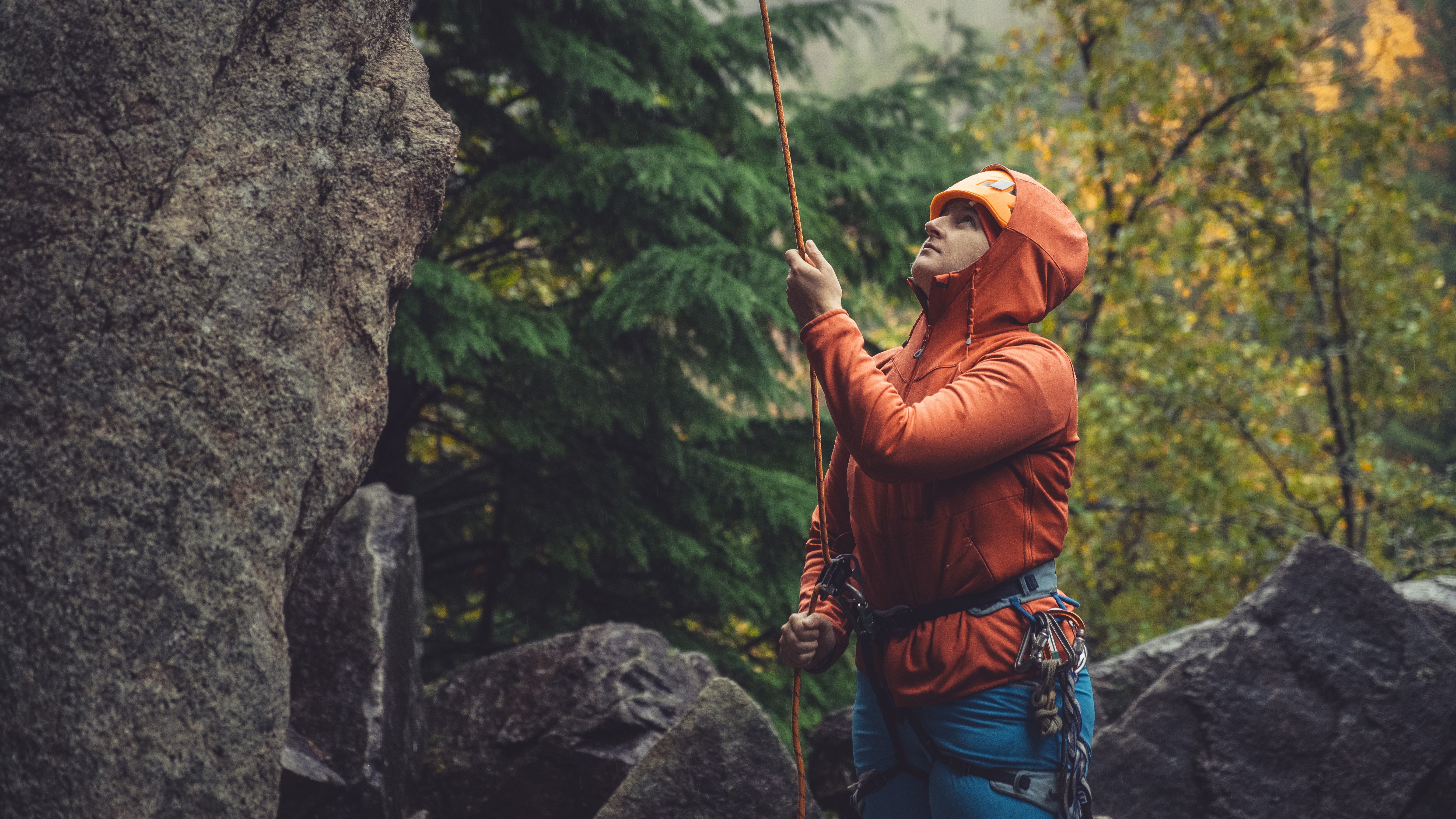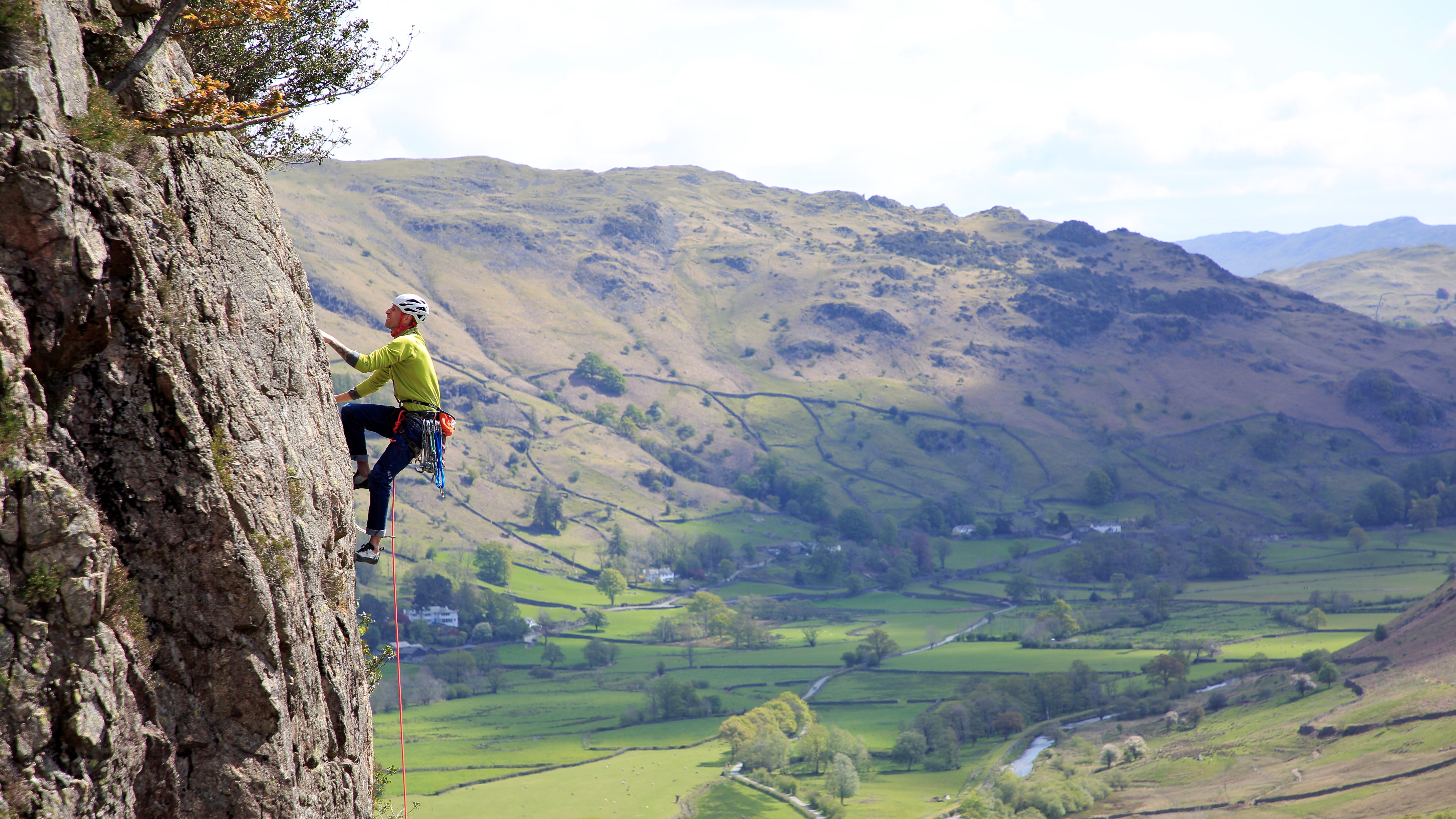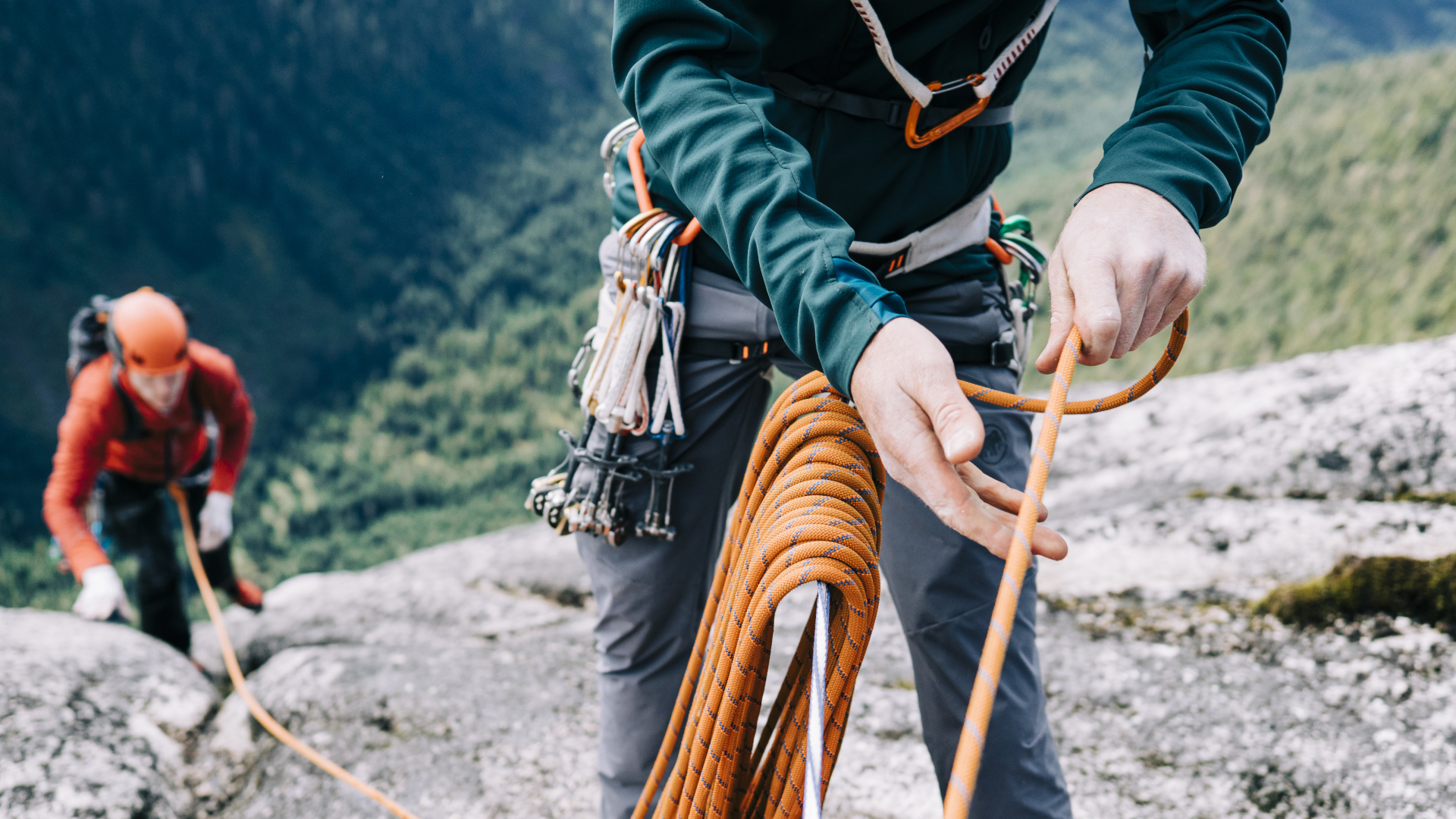Can you go rock climbing in the rain?
Ready to hit the crag but Mother Nature has other ideas?

It’s finally spring and that means you can dust off your climbing shoes, haul out your harness and head to the crag for the first time in months. Except that it’s finally spring, so it’s also raining. Can you still go rock climbing?
I’ll be honest, since most of my rock climbing career has taken place in Colorado, I never gave this question any thought until now. After all, it virtually never rains there, outside of afternoon thunderstorms which can easily be avoided, and when it does, it’s a rare excuse to stay indoors and catch up on your correspondence.
Since I moved back to Scotland, however, I’ve learned that if you wait for a dry day to go rock climbing, you’ll never go. Some of the best climbing spots around the UK, such as those in Wales and the Peak District, get a lot of rain, and people really do just zip up their waterproof jackets and tie a figure eight. But is it really a good idea to go rock climbing in the rain?

What are the dangers of rock climbing in the rain?
The dangers of rock climbing in the rain are that the rock itself can become slick and crumbly, you could be more at risk of rockfall and if your rope gets soaked, it will be difficult to handle and absorb less energy if you fall. It’s also hard to look up when you’re belaying your partner because rain gets in your eyes and you can end up pretty wet and cold, though waterproof gear like rain pants can help when you’re on the ground. On a potentially less risky but inconvenient note, your approach could be muddier and more difficult.
Location is everything
As I mentioned, people do go rock climbing in the rain, though it’s no one’s favorite activity, but whether or not you should do it all depends on where you are, and the type of rock you’re climbing.
Let’s start with your location. If you live in Colorado, California or Utah, for example, you see so little regular rain that it would be a bit nuts to brave the wet and go climbing when you get so many dry days to enjoy. In those more arid climates, it’s probably best to just wait for things to dry out. But if you live in the northeast, Pacific Northwest or the UK and you want to climb outside, you might hardly ever experience totally dry rock anyway, so if you want to climb, there may be days when you brave a sprinkle or some wet rock.

Stay away from sandstone
The type of rock you’re going to be climbing on matters. Specifically, sandstone is notorious for soaking up moisture like a sponge and, according to the Access Fund, loses 75 percent of its strength when wet, meaning holds can snap off in your hand. This doesn’t just make climbing more dangerous, it can ruin the route for others.
Advnture Newsletter
All the latest inspiration, tips and guides to help you plan your next Advnture!
If sandstone is all that’s available to you, you’re going to want to give climbing a miss on a rainy day, and for several days after to allow the rock to dry out, which is another mark against climbing in desert areas like in Utah. Instead, consider instead going rock climbing indoors, or doing some cross-training or yoga for climbers.
Go for granite?
On the other hand, you don’t need to worry about the rain weakening harder rock like slate, granite and limestone as well as volcanic rock, so if you have that available to you, climbing it when wet still might not be the most fun (more like Type 2 fun), but it won’t break off in your hand.
What it probably will do is get incredibly slick, and make climbing extremely challenging and increasing you're likelihood of falls. Furthermore, sustained rain could make anchors less stable, so it’s advised to stick to lower, easier, bolted sport climbing routes. Even better, just keep your approach shoes on or wear hiking boots for some roped scrambling while you wait for things to dry out.
Julia Clarke is a staff writer for Advnture.com and the author of the book Restorative Yoga for Beginners. She loves to explore mountains on foot, bike, skis and belay and then recover on the the yoga mat. Julia graduated with a degree in journalism in 2004 and spent eight years working as a radio presenter in Kansas City, Vermont, Boston and New York City before discovering the joys of the Rocky Mountains. She then detoured west to Colorado and enjoyed 11 years teaching yoga in Vail before returning to her hometown of Glasgow, Scotland in 2020 to focus on family and writing.

